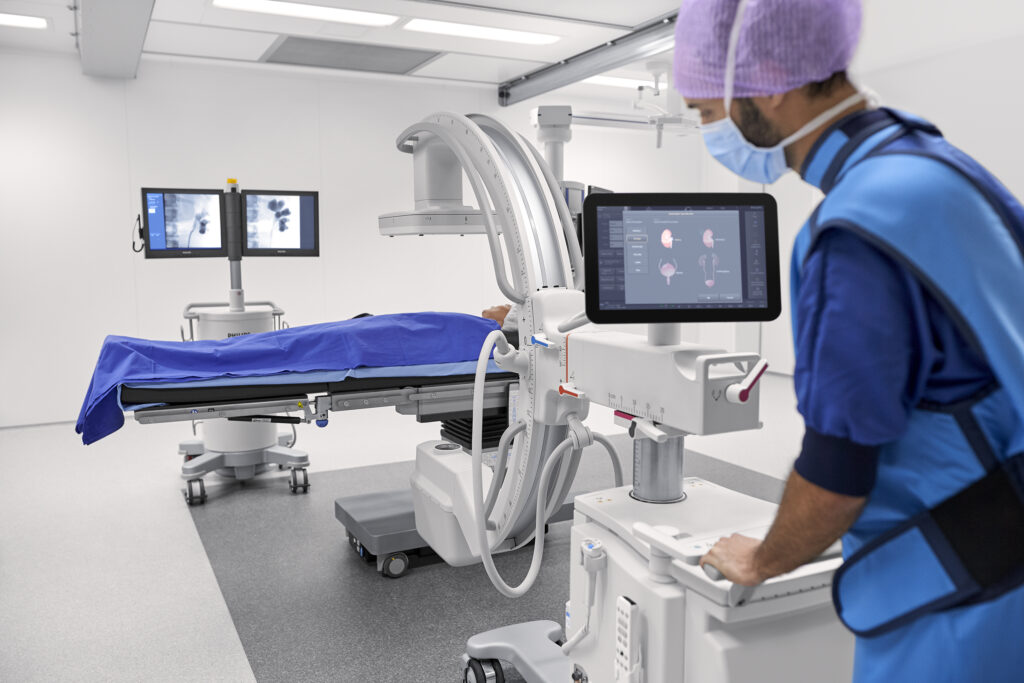Interventional neuroradiology
Interventional neuroradiology is an evolving specialty for minimally invasive treatment of abnormalities of the blood vessels in the brain and spine. Using advanced cross-sectional and three dimensional imaging, these procedures show great promise for improved diagnosis and clinical outcomes.
HOW ARE THESE PROCEDURES PERFORMED?
Under appropriate anesthesia, a tiny, tube-like catheter is inserted into one of the limb arteries (usually in the right groin region). Using x-ray guidance, this catheter is negotiated through the vascular tree of the body, into the vessels supplying the brain and spine. Through this, a dye can be introduced into the blood vessels, and its flow can be documented, to accurately diagnose abnormalities of the target organ vessels. A wide range of specialized equipment can be introduced into the circulation in this fashion, to repair the abnormal blood vessels.
WHAT ARE THE BENEFITS?
Interventional neuroradiology techniques often allow us access to areas of the brain and spine that are surgically difficult to reach. Because the procedures are minimally invasive, hospital stays and recovery periods are normally shorter. In many cases, they also pose a lower risk for complications and infection
The department of neuroradiology at Siddarth Neuro Hospital is equipped with an Advanced neurointerventional suite with 3D rotational angiography.This system enables digital subtraction angiography which permits clear visualization of brain, spine and coronary blood vessels without interfence from bony or dense soft tissue environment.
3D rotational angiography provides an image of a particular vessel while the camera rotates around the patient in a predefined arc, enabling viewing of the structure from multiple angles with a single injection of contrast medium. It gives exquisitely detailed 3 Dimensional visualization of the blood vessels, thereby enabling faster and more accurate clinical decisions while treating complex abnormalities of the blood vessels.

